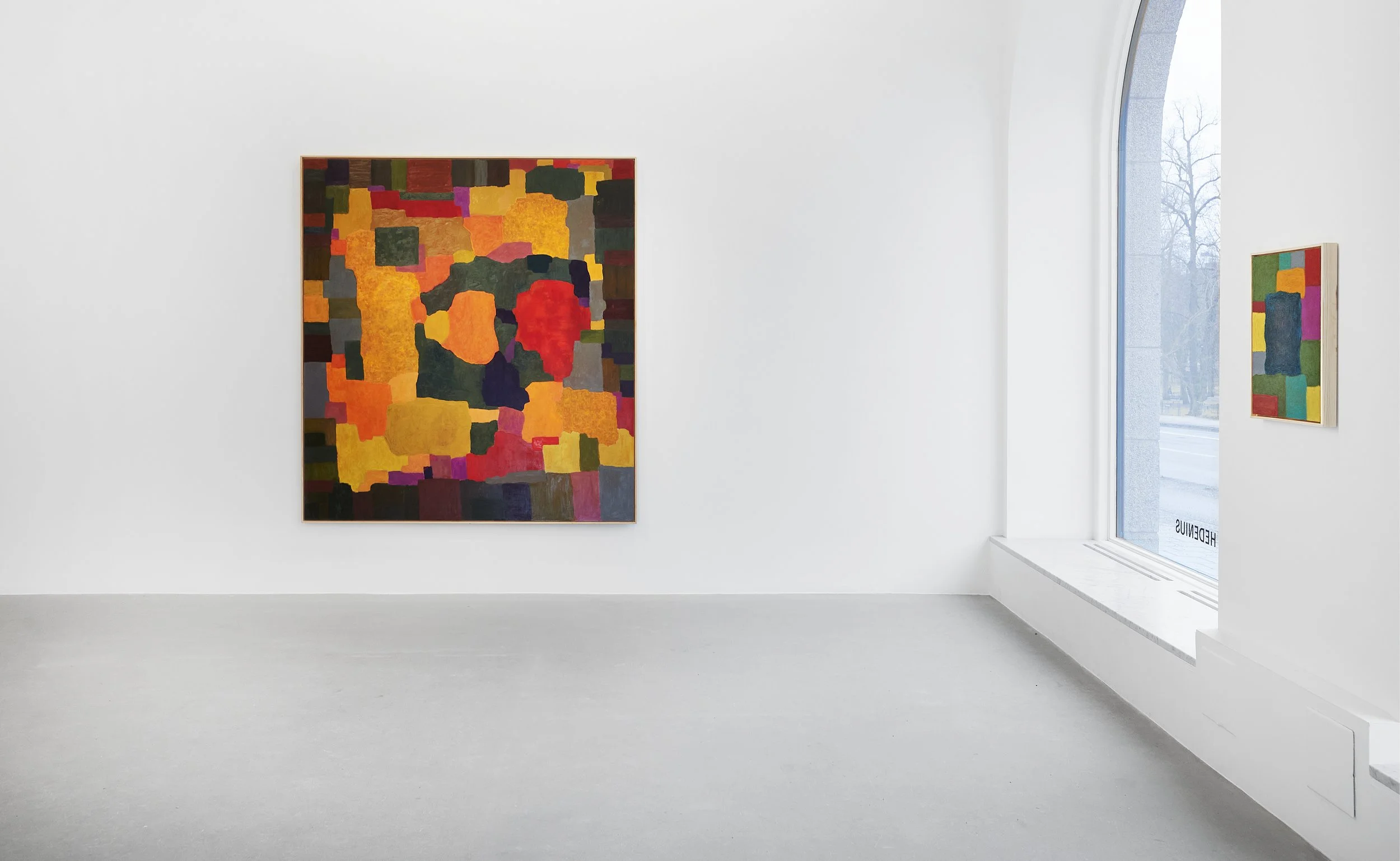ROLF HANSON
FECIT
22 february - 23 march 2024
“With the exhibition Fecit here at Hedenius in the “spring winter” of 2024, Rolf Hanson concludes a twenty-year artistic tenure.
From a solid, consistent foundation, with heavy authority, Hanson has developed his painting in long cycles. His breakthrough came with his solo exhibition at Moderna Museet in 1985. With what can be described as a powerful abstract natural lyrical idiom, darkly doomed, he was one of the artists who defined the eighties, as some prefer to express themselves nowadays. The kinship is evident not only with some of his Swedish contemporaries but also with the great global names of the era. In the background loomed the abstract expressionism of the forties and fifties in the New York School and its European counterpart.
In the nineties, a few figurative motifs formed in Hanson's paintings — first the house, the large eighteenth-century rectory where he himself lived for a time, then the staircase, which Carl Fredrik Hill, one of Hanson's and other Expressionist artists' inspirators, had painted in the village of Montigny-sur-Long near the Fontainebleau forest, in Hanson's work immersed in various partially abstracted, blood-soaked color variations. The series Runtom hus and, above all, Runtom trappa, are classics of Swedish contemporary art. In the Descendant/Remontant series, a mysterious abstract female figure appeared, a ghost of Marcel Duchamp descending/ascending the stairs — as close as we get to a human presence in Rolf Hanson's art.
From the turn of the millennium, Rolf again stepped up the level of abstraction. For most of the twenty-first century, he has devoted himself to purely abstract painting constructed of first round, then mainly square, quadratic and rectangular, color fields. Rolf Hanson himself says that he is not even familiar with the American term color field painting, the label used the painting technique applied by several of the heroic abstract expressionists.
I myself still regard Rolf Hansson as a nature poet. I think the spirit of nature lives on in the series Eadem sed Aliter, Sine Nomen, Hic et Nunc, and Nunc et Diende, which Rolf now conclude at Hedenius. The paintings remind me of flying at high altitude over fields cultivated with various crops. Lars Nittve is right when he writes that the color scale in these paintings has become more tropical and fantastic, indeed more cheerful and positive, in contrast to the dark Nordic organic autumn and winter of Hanson's early work.
In 2021, Rolf Hanson, in collaboration with art hall director Bo Nilsson, heralded more than forty years of artistic work with the monumental Retroactive at Artipelag — a mammoth exhibition whose weight took the viewer's breath away.
Rolf himself describes this enormous project as a complicated experience — that it made him simultaneously happy and depressed to engage in brutal combat with all these works from his long career, many of which he hadn’t seen for decades. How to keep advancing after such a manifestation?
Various circumstances contributed to Rolf Hanson's decision to first go back and complete the aforementioned series, spurred by the paintings' "performance" at Artipelag. The past few years have been devoted to finishing the works he had kept in his studio and in storage, some of which were started as far back as at the beginning of the millennium. Without the "nudge" from Artipelag, these paintings might have been left unfinished.
When he started this work, Hanson was unsure if the plan would work. However, the inspiration and joy materialized as he had hoped. It is these paintings we can now admire at Hedenius — an epilogue, an 'afterbirth' to the Artipelag exhibition.
Thus another chapter is closed for Rolf Hanson. The fields now lie open for new painterly canquests — albeit, we can be sure, underpinned by the solid foundation of Hanson's unmistakable artistic base. There will be no more of the past. There is, as he states, no further need.
Comparisons with other artists and artistic expressions are no longer particularly relevant. As Rolf notes, this has become less necessary the longer he has been working. According to the artist, neither nature is as important as it once was. It is all about color, form, composition and the blessed balance; a "wonderfully balanced skew," to quote Lars Nittve. Rolf Hanson remains first and foremost a master of colorism — a sculptor and architect of painting who uses colors as building blocks to construct his own magnificent visual worlds.
-Claes Britton














